February 11, 2004
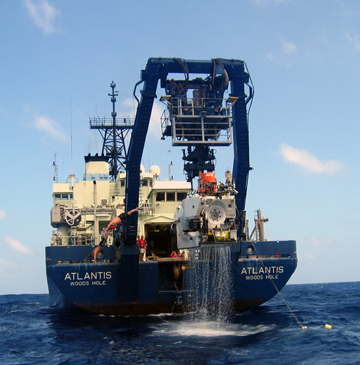
Mark Spear of the Alvin Group took this terrific photo of the swimmers, Carl Wood and Gavin Eppard, diving off Alvin as it is lifted back on board R/V Atlantis
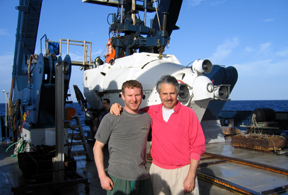
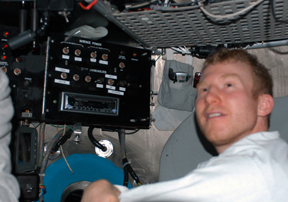
Dan Fornari (red sweatshirt) and Adam Soule dove together today on Alvin Dive 3968. It was Adam's first dive to the seafloor. Read his thoughts below.
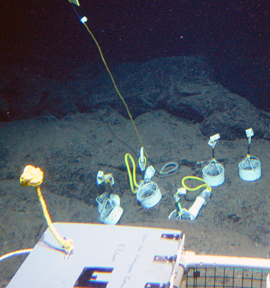
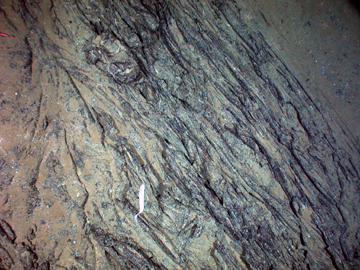
We deployed more of Cara's and Wolfgang's 'baskets' on the crest of the EPR today, about 500 m west of the Axial Trough. Right photo shows some of the curtain-folded sheet flows we mapped and sampled today using Alvin
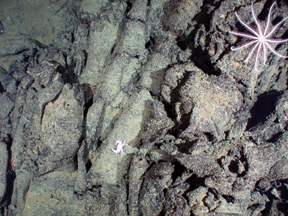
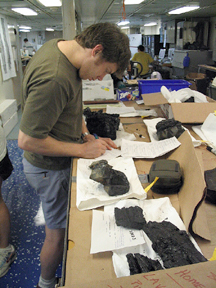
A brisingid starfish and a small brachuryan crab on folded and hackly sheet lava photographed during the dive today. John Maclennan descrbing some of the samples collected on the dive.
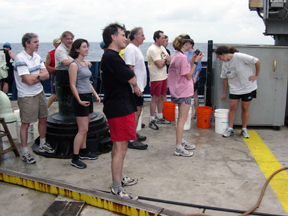
An expectant crowd on the fantail awaits the divers; note buckets in the background...
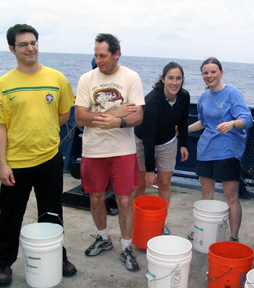
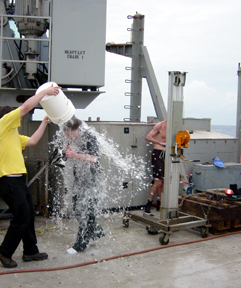
Caught in the act! Antoine Page, Ken Sims, Cara Santelli, and Rhian Waller prepare the 'baptism'. Adam getting doused with icy salt water.
Adam Soule wrote this about his adventure on the seafloor today.
Today was my first dive in Alvin and my first field experience studying lava flows on the seafloor after having spent many years studying them on the Big Island of Hawaii. There are many analogies that can be made about lava flows in these two dramatically different settings. Lava chemistry, eruption temperature, and effusion rates can all be similar. However, how you go about looking at them in the field couldn't be more different. I am used to spending a day walking around on a lava flow, getting the lay of the land, with the most difficult preparation being to remember to put on sunscreen.
On the seafloor, wandering about is not an effective strategy.
A great deal of planning goes into picking a handful of sites based on remote sensing sonar data on a lava flow that we will try to go to, and we must hope that those locations can give us the information we need. On land I will often go to a high point to survey the morphology of a flow on a broader scale. On the seafloor, you can only see a few 10's of feet from your viewport, but what an amazing view it is. On land I can take my time selecting sample sites and collecting as many samples as I can carry.
Sampling lavas on the seafloor is more art than science.
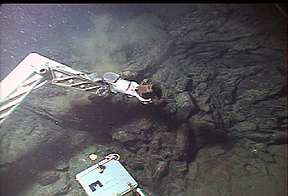
Samples are collected with robotic manipulators in a process that resembles trying to pick up a toothpick while wearing an oven mitt. Despite these challenges, and with the help of skilled Alvin pilots, we had a great day of observations and sampling that will allow us to interpret how submarine lava flows are emplaced.
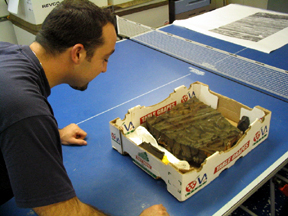
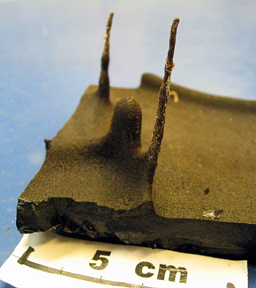
Tony Tarantino, the pilot of today's dive, looks at one of the samples he collected during the dive. 'Way to go Tony!' Right photo shows some of the delicate drip structures present on the undersides of many of the lobate and sheet lava sampled today.
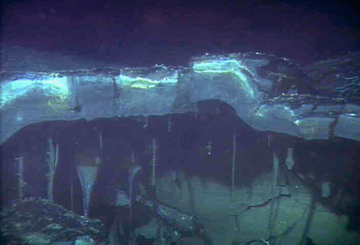
A beautiful example of a 'hanging garden' of drips seen by Maurice Tivey and Yuri Rzhanov on yesterday's Alvin dive in the Axial Trough near 9° 43.5'N. The drips suggest that super-hot, >800°C briny vapor exists under the lava crusts, during the formation of the lava flow and as the lava moves across the seafloor during an eruption.